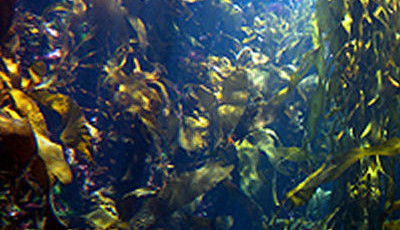Seaweed polymer may improve electrodes in Lithium-Ion batteries
on

By looking to Mother Nature for solutions, researchers have identified a promising new binder material for lithium-ion battery electrodes that could not only boost energy storage, but also eliminate the use of toxic compounds now used in manufacturing the components.
Known as alginate, the material is extracted from common, fast-growing brown algae. In tests so far, it has helped boost energy storage and output for both graphite-based electrodes used in existing batteries and silicon-based electrodes being developed for future generations of batteries.
The research, the result of collaboration between scientists and engineers at the Georgia Institute of Technology and
The scientists looked at ways to improve binder materials in batteries. The binder is a critical component that suspends the silicon or graphite particles that actively interact with the electrolyte that provides battery power.
Finding just the right material is an important step toward improving the performance of lithium-ion batteries, which are essential to a broad range of applications, from cars to cell phones. The popular and lightweight batteries work by transferring lithium ions between two electrodes -- a cathode and an anode -- through a liquid electrolyte. The more efficiently the lithium ions can enter the two electrodes during charge and discharge cycles, the larger the battery's capacity will be.
Existing lithium-ion batteries rely on anodes made from graphite, a form of carbon. Silicon-based anodes theoretically offer as much as a ten-fold capacity improvement over graphite anodes, but silicon-based anodes have so far not been stable enough for practical use.
Among the challenges for binder materials are that anodes to be used in future batteries must allow for the expansion and contraction of the silicon nanoparticles, and that existing electrodes use a polyvinylidene fluoride binder manufactured using a toxic solvent.
Alginates -- low-cost materials that are already used in foods, pharmaceutical products, paper and other applications -- are attractive because of their uniformly distributed carboxylic groups. Other materials, such as carboxymethyl cellulose, can be processed to include the carboxylic groups, but that adds to their cost and does not provide the natural uniform distribution of alginates.
The alginate is extracted from the seaweed through a simple soda (Na2CO3)-based process that generates a uniform material. The anodes can then be produced through an environmentally friendly process that uses a water-based slurry to suspend the silicon or graphite nanoparticles. The new alginate electrodes are compatible with existing production techniques and can be integrated into existing battery designs, Yushin said.
Thus far, the researchers have demonstrated that the alginate can produce battery anodes with reversible capacity eight times greater than that of today's best graphite electrodes. The anode also demonstrates a coulombic efficiency approaching 100 percent and has been operated through more than 1,000 charge-discharge cycles without failure.
Alginates are natural polysaccharides that help give brown algae the ability to produce strong stalks as much as


Discussion (0 comments)